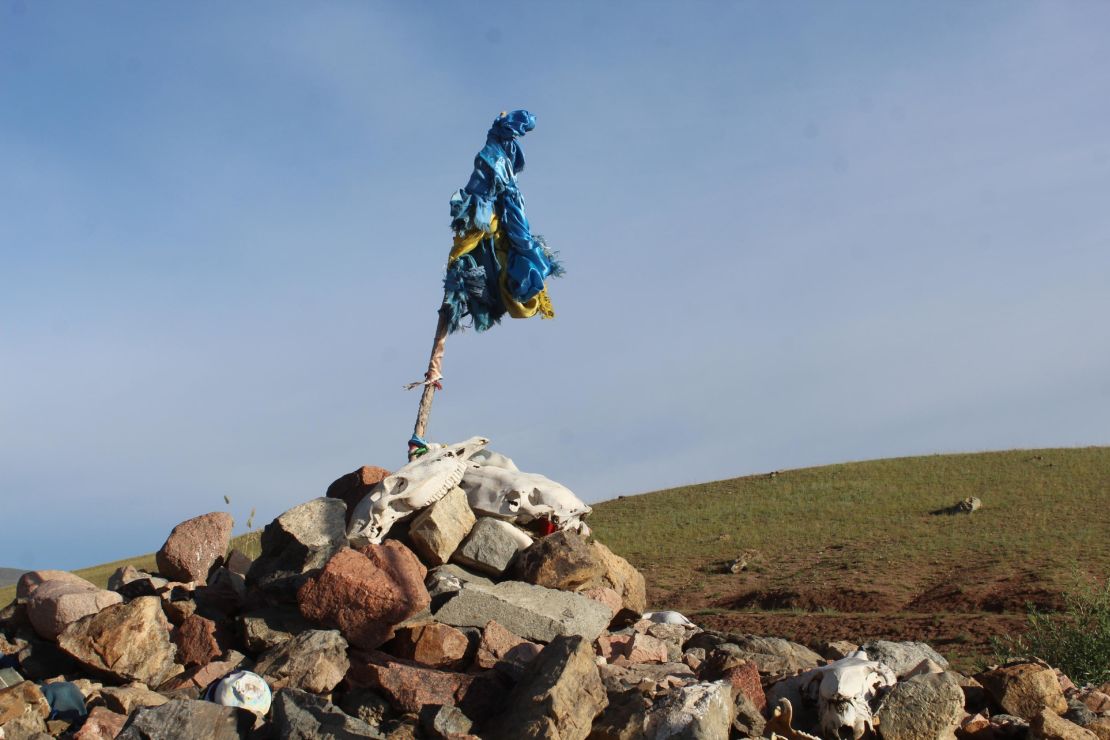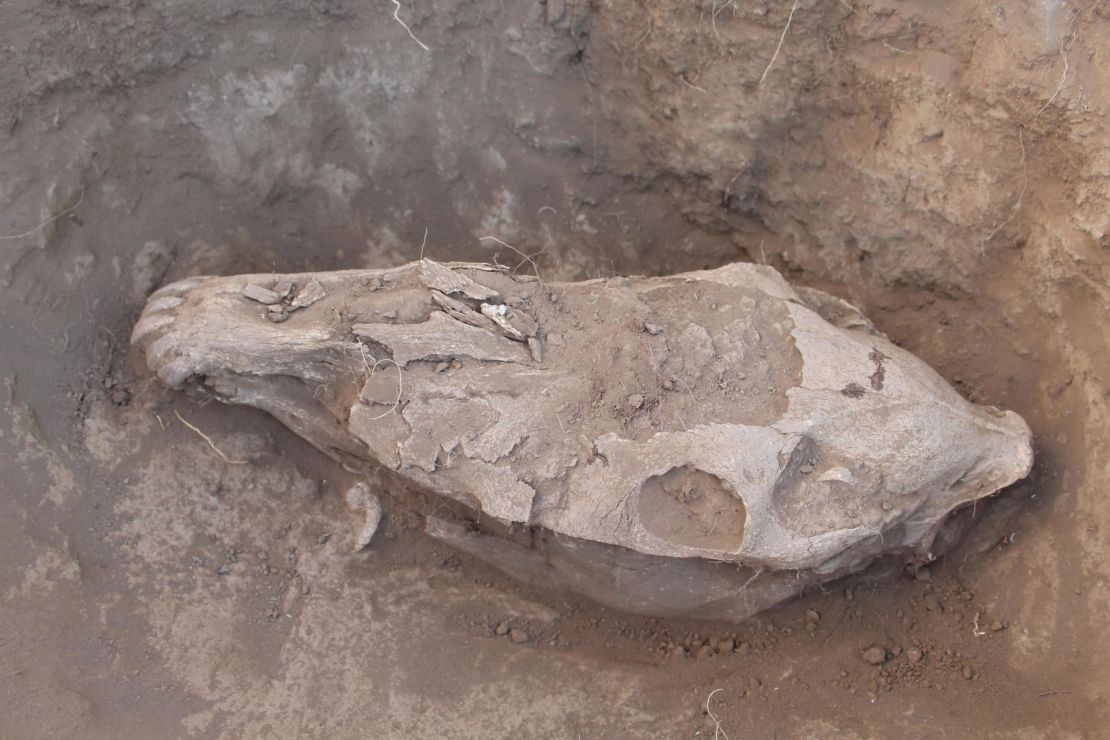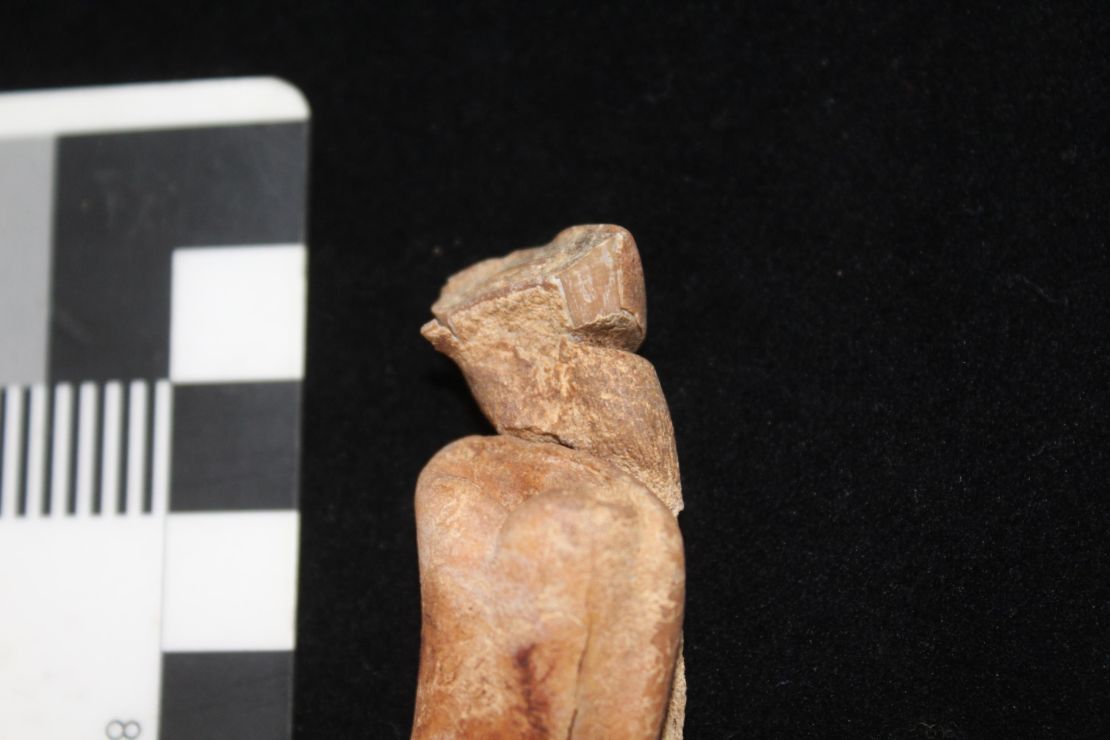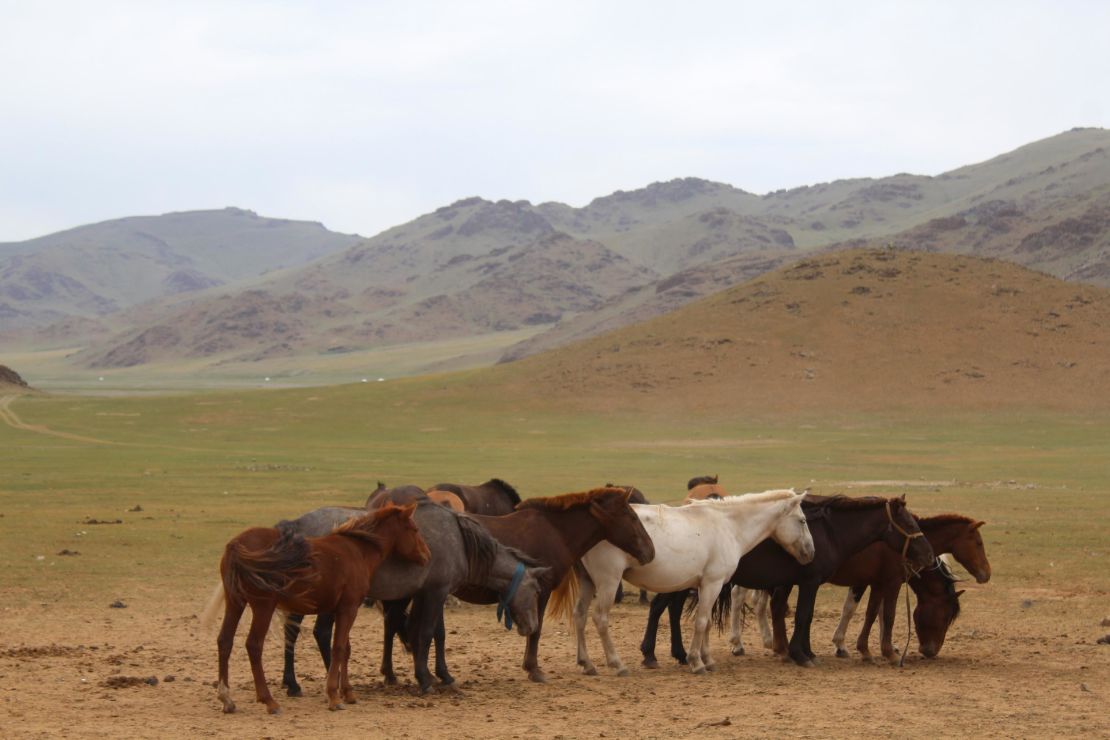Story highlights
Nomadic herders from the Deer Stone-Khirigsuur culture experimented with horse dentistry between 1300-700 B.C.
A study by the Max Planck Institute for the Science of Human History found herders would saw or remove teeth that were causing horses pain
More than 3,000 years ago on the open steppes of Mongolia and eastern Eurasia, nomadic herders were experimenting with equine dentistry.
However, the practice did a lot more than just alleviate horses from pain – in fact, researchers argue it was here where horses were transformed into a tool that drove globalization.
A new study carried out by the Max Planck Institute for the Science of Human History has found that the world’s oldest known evidence of horse veterinary dental care was carried out by the Deer Stone-Khirigsuur Complex, a culture that existed between 1300-700 B.C.
William Taylor from the institute led a team of scholars who carefully analyzed horse skulls from ancient burial areas on the Mongolian steppe. The impressive horse burials – from which the nomadic people take their name – consist of megaliths with intricate carvings, as well as large mounds made out of stone.

READ: Transgender jockey inspired by Caitlyn Jenner
Researchers found that herders were experimenting with equine dentistry by sawing down their horses’ teeth with stone tools if they were growing out of place and would often pull out baby teeth if they were causing foals pain or difficulty while feeding.
“We found the oldest direct evidence of veterinary dentistry and veterinary care and that’s interesting in itself but this is the latest finding in a series of studies looking at this Deer Stone-Khirigsuur culture which has been very poorly understood for a very long time,” Taylor told CNN.
More than that, he says, the team has found that veterinary care is “directly linked” to the origins of horseback riding and herding in the region.

READ: Meet the smallest, and tallest, horses in the world
According to the study, the findings are significant because it counteracts previous theories that veterinary care was a “western science” developed by civilizations in China or the Mediterranean – but instead by nomadic people centuries earlier.
“A tradition of care was first developed … centuries earlier among the nomadic people whose livelihood depended on the well-being of their horses,” Taylor explained.
“It speaks to a very sophisticated understanding of not just horse anatomy, but horse behavior and the fascinating thing about this time period is we see all kinds of cultural changes linked around horses … they bury them in special burial mounts along the edge of their big ritual site, we start seeing horses popping up in these elaborate, beautiful carvings on the stones – horses began to intrude into the artwork and the religious cognitive mindset in a major way.”
From a tool used by herders, to a tool of warfare
Researchers also found that innovation in veterinary care helped facilitate developments in horse control technologies. It was around this time, that leather mouthpieces were being replaced with bronze and iron bits.
Not only was the team able to identify skeletal changes which are related to bridling and heavy exertion, but also noted that almost every horse that was examined were missing their vestigial wolf teeth – which are similar to human wisdom teeth.
Taylor, with the help of his Mongolian colleagues, found that the nomadic herders had begun removing the vestigial teeth – just like veterinarians still do to this day – because of the pain and sensitivity that horses can experience when metal bits rub on the wolf teeth.

“It might be hard to see how and why (metal bits and the removal of wolf teeth is) important,” Taylor said, “but actually there’s many people who argue that those metal bits are essentially one of the things that allowed horses to go from a tool used by herders to a tool of international warfare.
“The innovation of the bit was essentially facilitated by major innovation in veterinary care. I think it’s really striking and it suggests that this nomadic discipline of veterinary care actually may have been one of the driving factors which enabled these really sweeping changes that took over the Eurasian continent in the first millennium B.C.”
The start of globalization
Taylor explains that nomadic techniques in dental care would have allowed riders to travel farther thanks to their horses being healthier and happier, and inevitably may have played a key part in reshaping the cultural and biological landscapes of Eurasia during that time.

“Dr Taylor’s study shows that veterinary dentistry – developed by Inner Asian herders – may have been a key factor that helped stimulate the spread of people, ideas and organisms between East and West,” Director of the Department of Archeology for the Max Planck Institute, Nicole Boivin, said in a statement.
“Horses themselves really are one of the key factors that drove the properties of globalization that we think of today,” Taylor added.
Without these developments, he argues, perhaps history could have unfolded differently – as veterinary dentistry and the use of metal bits contributed to the great Eurasia conquest of the military leader and empire builder, Genghis Khan, in the 13th century.



